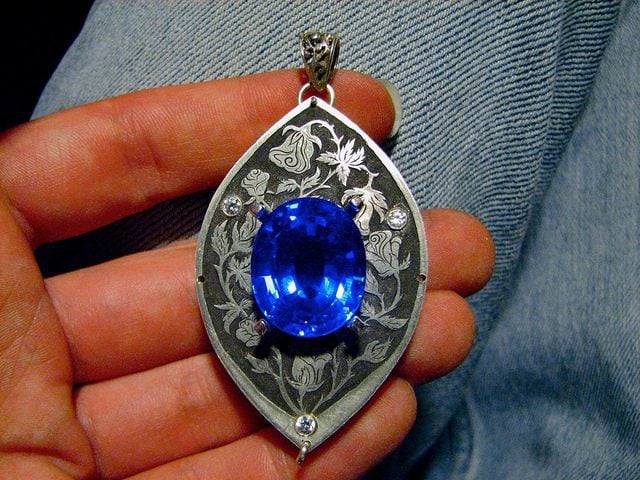Should Beginners Practice Faceting on Natural or Synthetic Quartz?
Natural and synthetic quartz rough are both inexpensive. Nevertheless, learn why novice faceters should practice with the natural material in most cases.
2 Minute Read
Answer: From a faceting standpoint, starting on natural or lab-made quartz makes no difference. Depending on the manufacturing process, synthetic quartz has some standard types of flaws, such as bubble lines. However, these fairly predictable flaws should pose no problems.
Nevertheless, I recommend starting with natural quartz for several reasons.
Some Problems Novice Faceters Should Experience
When you work with natural quartz rough, you'll discover many types of flaws and inclusions, such as color zoning. As a result, you'll learn how to recognize and work with them. In addition, you'll deal with other types of problems, such as gem orientation. Learning these lessons now will help you later in your faceting career.
One day, you'll likely cut more expensive gem rough, not just quartz. Knowing how to select rough, how to spot problems, what flaws you can live with, and what's not acceptable in a finished gemstone are vital skills for a faceter.
Beginners need practice. In particular, they need to practice on a gem material that's relatively easy to cut but still poses challenges, like natural quartz. (As you advance, other rough gems will present additional challenges).
Inexpensive Natural Rough Can Still Yield a Valuable Finished Gem
Beginners also need relatively inexpensive material to practice faceting. Both low-end natural and synthetic quartz rough fit the bill. However, I think you should still choose natural quartz.
You can easily find a nice, huge, natural, clear quartz for less than $100 a kilo. For not much more money, you can acquire a lot of nicely colored quartz rough, too. Quartz only gets expensive in the top high-grade commercial colors.
Don't underestimate how truly gorgeous a properly cut piece of clear quartz can be, especially in larger sizes. Even if you're just starting to facet, cut something that's worth your time. That way, when you finish cutting a piece of natural quartz, you'll have something valuable. While it may not be worth a lot, it may be at least sellable and, thus, worth something.
I actually sell large, light-colored, finished natural quartz stones fairly easily. Since the rough is inexpensive, I make a decent profit. On the other hand, you won't be able to sell your finished synthetic quartz gems for much of anything. Even though synthetic rough is also inexpensive, you won't make much, if any, profit from your hard work.
Use Synthetic Quartz for Competition Cutting
If you plan to cut quartz for a competition, use synthetic quartz if the rules allow it. This will save you a lot of time and trouble, which merits making an exception in this case.
Jeff R. Graham
The late Jeff Graham was a prolific faceter, creator of many original faceting designs, and the author of several highly-regarded instructional faceting books such as Gram Faceting Designs.
Related Articles
Quartz Value, Price, and Jewelry Information
How To Make A Quartz Wedge For Polariscope Testing
Trapiche Gems: An Introduction
Facet Designs For Beginners
Latest Articles
800 Years of Mogok: A Celebration in Tenuous Times
What is the Average Gemstone Faceting Yield?
Pyroxmangite Value, Price, and Jewelry Information
How to Identify Emerald Simulants and Synthetics
Never Stop Learning
When you join the IGS community, you get trusted diamond & gemstone information when you need it.
Get Gemology Insights
Get started with the International Gem Society’s free guide to gemstone identification. Join our weekly newsletter & get a free copy of the Gem ID Checklist!
